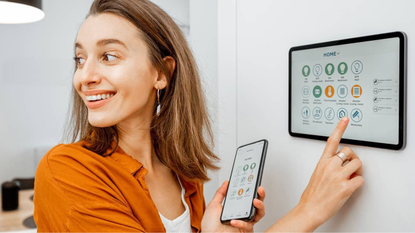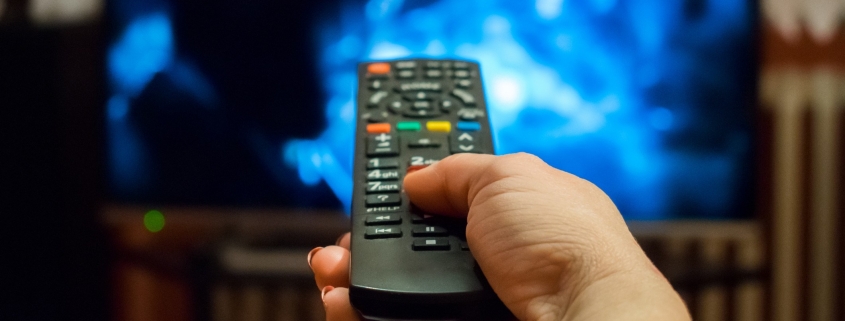Smart Security Systems: Safeguarding Your Home
In an increasingly connected world, smart security systems have become an essential part of home protection. These advanced systems not only offer traditional safety measures like alarms but also incorporate modern technology to provide real-time alerts, remote monitoring, and seamless integration with other smart devices. Whether you’re looking to prevent break-ins or simply keep an eye on your home while you’re away, smart security systems provide unparalleled peace of mind.

1. The Rise of Smart Security Systems
As technology continues to evolve, so too does the sophistication of security systems. Gone are the days when securing your home involved only a deadbolt or an alarm system that rang locally. Today’s smart security solutions utilize wireless connectivity, artificial intelligence, and cloud storage to offer dynamic protection.
Remote Monitoring and Alerts
One of the defining features of modern smart security systems is the ability to monitor your home from virtually anywhere. Whether you’re at work or on vacation, live feeds from smart cameras allow you to check in on your home using your smartphone or computer. Many systems also provide instant alerts via push notifications, email, or SMS, informing you of suspicious activities like movement or unexpected door openings.
Cloud Storage and Real-Time Footage
Cloud storage is another crucial aspect of smart security. Rather than relying on local storage devices that can be damaged or stolen, smart security systems store footage securely in the cloud. This not only ensures the data is safe but also allows users to access and review video footage at any time. Certain systems even offer continuous recording, so there are no gaps in the surveillance.
2. Key Components of Smart Security Systems
Video Doorbells
One of the most popular components of a smart security system is the video doorbell. Devices like the Ring Video Doorbell 4 or Google Nest Hello allow homeowners to see, hear, and speak to anyone at their door via a live video feed. With features like motion detection, night vision, and two-way audio, video doorbells act as both a deterrent and a convenient way to monitor package deliveries or visitors.
- Advantages: Enhanced convenience, real-time notifications, and deterrent effect on would-be intruders
- Installation: Simple DIY setup, usually powered through existing doorbell wiring or rechargeable batteries
Smart Cameras
Smart security cameras are at the forefront of modern home protection. Offering high-definition video, motion sensors, and wide-angle lenses, these cameras can cover key areas such as entry points, backyards, or garages. Devices like the Arlo Pro 4 or Wyze Cam v3 provide real-time footage, night vision, and even integration with voice assistants like Alexa and Google Assistant.
- Features: 2K or even 4K resolution, color night vision, built-in spotlight
- Placement: Indoor and outdoor models available; weather-resistant options for external areas
Smart Locks
Gone are the days of hiding a key under the doormat. Smart locks like the August Wi-Fi Smart Lock or the Schlage Encode Smart Deadbolt allow users to lock and unlock their doors using their smartphones or through voice commands. These systems often include features such as temporary access codes for guests, auto-lock settings, and remote access, allowing homeowners to secure their doors from anywhere in the world.
- Benefits: Convenience of keyless entry, enhanced control over access, remote monitoring
- Integration: Many models work with smart home ecosystems, including Amazon Alexa, Google Home, and Apple HomeKit
Motion Detectors and Contact Sensors
Motion detectors are pivotal in spotting unusual activity inside or around your home. Often used in conjunction with other smart devices, these sensors can trigger cameras, lights, or alarms when motion is detected. Similarly, contact sensors for windows and doors notify users if an entry point is opened unexpectedly.
- Use Case: Monitoring high-traffic areas such as hallways or entryways
- Flexibility: Can be paired with other smart devices for enhanced automation (e.g., lights turning on when motion is detected)
3. Integration with Smart Home Ecosystems
Smart security systems thrive when integrated with a broader smart home setup. Devices like the Amazon Echo or Google Nest Hub act as centralized hubs, allowing users to control security components alongside other smart devices such as thermostats, lights, or speakers. This interconnected approach enhances convenience and efficiency, as multiple devices can communicate with one another.
Voice Control and Automation
Through voice commands, homeowners can arm their security systems, lock doors, or view live feeds from cameras without lifting a finger. Platforms like Alexa and Google Assistant make it easy to control devices verbally, adding another layer of accessibility to home security.
For example, saying, “Alexa, show me the front door,” can instantly stream footage from your doorbell camera to a smart display. Moreover, automation routines can be established to ensure doors lock and alarms arm automatically at certain times, such as when leaving the house or going to bed.
Seamless Device Collaboration
When various smart security components are linked together, they can work in concert to provide a more robust safety net. For instance, if a camera detects movement, the system can automatically turn on smart lights or sound an alarm. These triggers can be customized to suit individual needs and scenarios, providing a level of automation that goes beyond manual control.
4. Advantages of Smart Security Systems
Deterrence and Prevention
One of the major benefits of smart security systems is their deterrent effect. Visible cameras and video doorbells signal to potential intruders that the property is under surveillance, reducing the likelihood of a break-in. In some cases, just receiving an alert that someone is approaching the front door can provide enough time to activate an alarm or notify authorities.
Enhanced Peace of Mind
Smart security systems offer peace of mind by putting control and visibility into the homeowner’s hands. The ability to monitor the home from anywhere, review footage, and receive real-time updates ensures that the property is protected even when no one is physically present.
Customization and Flexibility
Many smart security solutions are modular, allowing users to expand or adapt their systems over time. Whether adding more cameras, integrating sensors, or upgrading to a more advanced alarm system, homeowners can build a security network that suits their specific needs.
5. Future Trends in Smart Security
With advances in AI and machine learning, the future of smart security will likely include even more intelligent systems capable of differentiating between common events (such as pets moving) and potential threats. We may also see further integration with other smart home devices, creating seamless automation that enhances both safety and convenience.
Additionally, biometric security measures such as facial recognition and fingerprint scanning could become more widespread, making it even harder for unauthorized individuals to gain access to the home.
Conclusion
Smart security systems have transformed the way we protect our homes. From video doorbells to advanced cameras and smart locks, these devices provide comprehensive protection, flexibility, and control. By integrating with broader smart home ecosystems, they offer homeowners the ability to monitor and secure their property with unparalleled ease, ensuring safety and peace of mind for years to come.





